To continue to increase efficiency in the development of new components and systems for electric drives, Porsche Engineering uses test methods specifically adapted to the requirements of high-voltage technology. As an example, high-voltage batteries are tested on vehicle and component test benches at the Bietigheim-Bissingen and Nardò locations, while hardware-in-the-loop simulation environments are available for testing the software for pulse inverters (PIs). This involves testing the real hardware in a virtual vehicle system.
The PI plays a key role in electric vehicles because it converts the DC voltage from the battery into the multiphase AC voltage and the associated rotating field for the electric drive motor. When energy recovery is active in overrun mode, the PI works in the opposite direction and converts the motor’s AC voltage into a DC voltage that is used to charge the battery. “Precise PI control for the various performance and comfort requirements in different driving situations requires highly complex control algorithms and safety functions that have to be tested before the drive is put into operation,” explains Rafael Banzhaf, Technical Project Leader at Porsche Engineering. “This involves, for example, ensuring the drive system enters a safe state in exceptional situations such as a crash with airbag deployment.” Prior to development of the PI-HiL system, the tests had to be carried out in the vehicle or on a real test bench, with there always being a risk that something could be damaged in the event of software errors in the control unit.
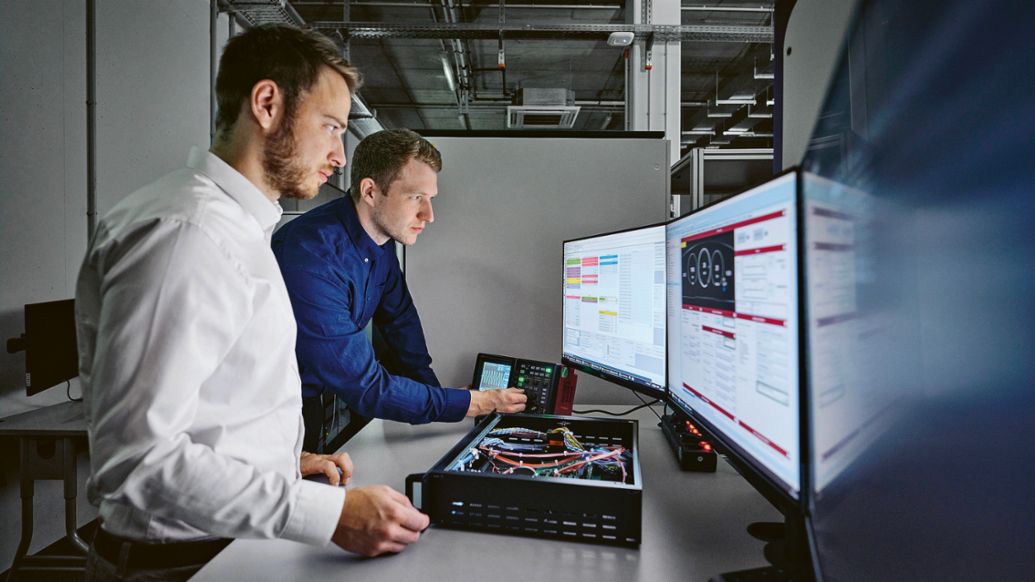
Porsche Engineering has therefore developed a test bench concept for testing the PI software, in which the real PI ECU is integrated as hardware-in-the-loop (HiL). “The ECU is exactly the same as the version in the vehicle, so we can draw reliable conclusions about the function of the software that has been installed,” says Thomas Füchtenhans, Development Engineer at Porsche Engineering. “The only modification is a disconnection of the high-voltage components from the low-voltage components such as the PI control board in the ECU. This is necessary for both functional and safety reasons but has no impact on the tests.”
Calculations in nanoseconds
When the HiL tests are conducted, the PI control board does not activate real hardware, but rather a simulation of the PI power unit. This, in turn, is linked to simulations of the high-voltage battery, the electric drive motor, the bus system and the rest of the vehicle in order to factor in the impact on the PI control caused by vehicle systems such as airbags or the brake control system, and the driver, on the PI control. Conversely, the simulation delivers virtual sensor data such as phase currents and temperatures back to the PI control unit, thereby closing the control loop. Due to the high demands on the real-time capability, the simulations for the battery and the rest of the vehicle are carried out on a real-time computer (RTPC), while even faster FPGAs (field programmable gate arrays), which allow simulation times within the nanosecond range, are used for the power electronics and the electric motor.
The test scopes possible on the HiL test bench primarily include functional tests according to specification requirements, but also flash tests of new software, validation tests as a safety step before further analyses are conducted in the vehicle, and tests of the interfaces, diagnostic functions, execution times and of cybersecurity and virtual endurance testing. “While we cannot completely replace tests on real test benches or in the vehicle with the PI-HiL, we can significantly reduce their scope, thereby lightening the load on the real test benches and reducing costs significantly while increasing safety as well,” reports Banzhaf.
The development of the PI-HiL test bench is the result of close cooperation between different Porsche Engineering locations. Six PI-HiL systems are currently in use, and there are plans for this capacity to increase. “A special feature of our approach is full remote access to control the test benches,” says Füchtenhans. “This allows, for example, application engineers running tests in Sweden or the US to control the simulations from their location. Because all test benches are connected to each other, and to the archiving system, the data can be made available on the servers to all participants with immediate effect. The Shanghai location in particular offers great opportunities for high testing efficiency in this regard, as it allows round-the-clock test implementation and evaluation in the international network of teams due to the time difference between Europe and China.”
Generating test cases using AI
Another advantage of Porsche Engineering’s PI-HiL is its high level of automation. The requirements documentation for the PI control system supplied by customers is automatically imported. The test specifications are then automatically derived from the customer specifications and used to generate a variety of test cases and trials that can be implemented. “The closed automation chain increases efficiency throughout the test process. Instead of spending several weeks creating the more than 1,000 test cases for a PI test series manually, we only need about a few hours,” says Banzhaf.
In the future, there are also plans to employ artificial intelligence (AI) methods: Using natural language processing (NLP), AI is expected to correctly interpret requirements specifications delivered as a simple text document and convert them into machine-readable code. This is used as a basis to automatically generate the test sequences. Today, this activity is performed by experts who must have comprehensive overall system expertise. “Our approach transfers expert knowledge into the digital world, helping to save development time and costs. Initial validations have been very successful. Therefore, I am convinced that we will also use AI in the regular testing process in the medium term,” explains Banzhaf.
Even though virtual test procedures are covering more and more areas, they still cannot completely replace real-life trials of high-voltage batteries. For this reason, Porsche Engineering maintains an extensive infrastructure in Bietigheim-Bissingen, with vehicle as well as system and cell test benches. The former is used to analyze batteries more precisely at component level, while the latter even allow conclusions to be drawn at cell chemistry level. By means of a flexible adaptation of driving profiles and load spectrums, the driving situations relevant for the test can be simulated. Depending on the objective of the test, the battery’s charge and discharge behavior, its capacity, internal resistances, and temperature behavior are captured and recorded.
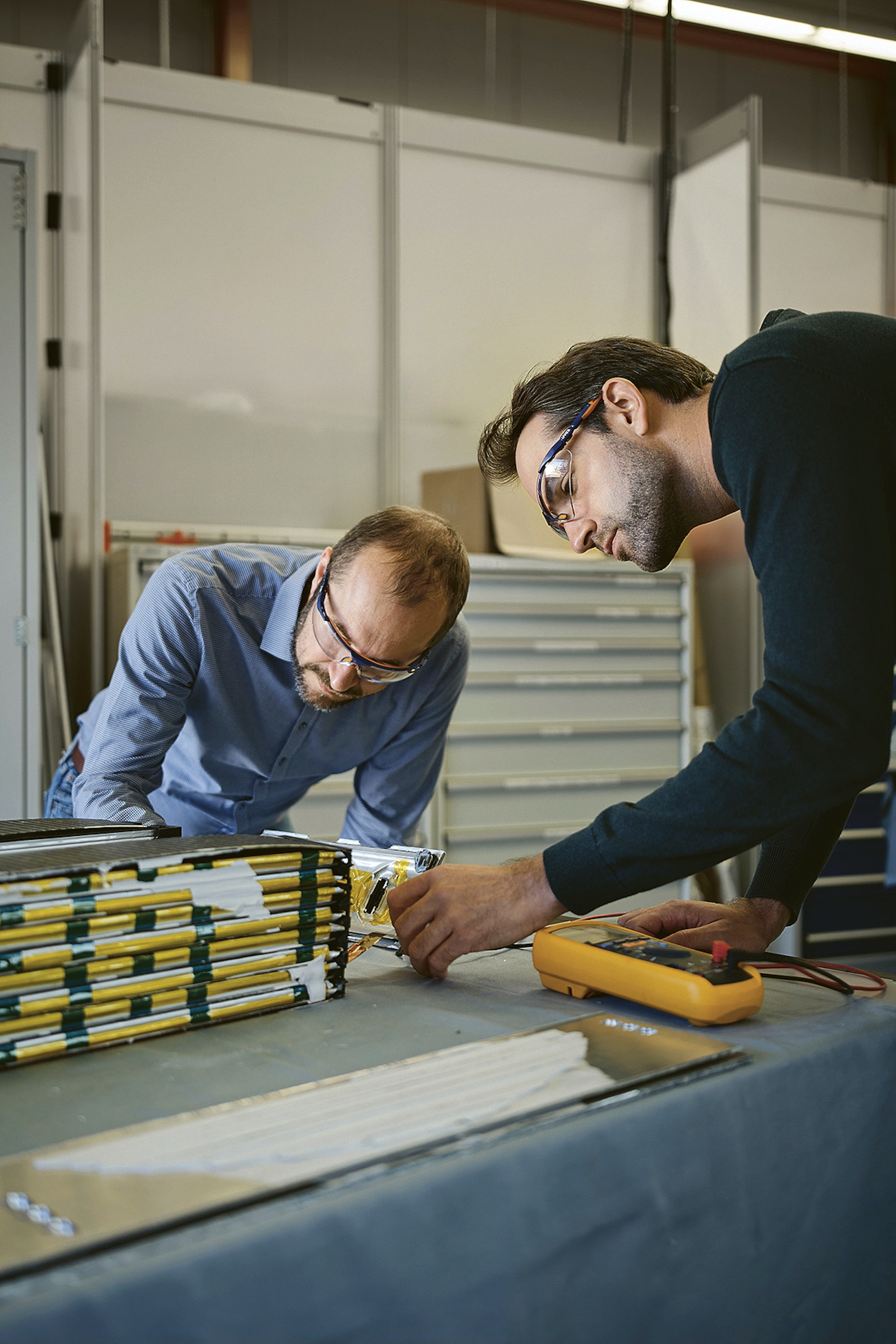
Batteries can be tested in their installed state on the vehicle test benches, for example for measurements of battery capacity and currents in the WLTP driving cycle. This is particularly important for endurance test vehicles, where testing the battery every 20,000 kilometers is part of the mandatory scope of testing. “Removing the battery for the tests would take too much time. Instead of taking around a week with removal, the turnaround time from delivery of the vehicle and test preparation to testing and data evaluation is only around 48 hours for us,” says Dirk Pilling, Development Engineer High-Voltage Batteries at Porsche Engineering. He also points to another aspect: “Work on the battery could falsify the vehicle endurance test, for example because screws connecting it to the vehicle body are undone and then reconnected during subsequent reinstallation.” Leak tests can be conducted on battery housings on another test bench. “Leaks are caused by corrosion or vibration damage, among other things. If water then penetrates the battery system, this can lead to short circuits,” explains Dr.Ulrich Lange, Project Leader High-Voltage Batteries at Porsche Engineering.
Prototypes for test
The integrated workshop plays a key role in all battery tests in Bietigheim-Bissingen. “The batteries are prepared for measurements and equipped with the necessary sensor technology there, however entire battery packs and modules are also set up as prototypes for the tests, and the batteries are disassembled for evaluation after the test,” says Lange. In some cases, the workshop also handles the preparation of batteries destined for testing at the Nardò Technical Center (NTC).
Over the past two years, Porsche Engineering has set up a complete test facility at the NTC for ‘misuse tests’ on high-voltage batteries in accordance with GB/T and ECE. This involves examining how the battery responds in the event of a ‘thermal runaway’ of a battery cell, which might, for example, be caused by overheating. At the NTC, these misuse tests are conducted in a building. “Thermal runaway tests in enclosed buildings place stringent demands on the way measurements are conducted to ensure that the fire burning in the battery remains under control and does not lead to any damage,” says Antonio Toma, BEV Coordinator at the Nardò Technical Center.
Therefore, the engineering team in Nardò joined forces with the safety experts and firefighters at the NTC to develop a sophisticated safety concept. After delivery, the batteries are prepared for examination before undergoing testing. Fire extinguishing systems that are triggered automatically ensure a high level of safety. The battery status is assessed after the test. If critical, the battery must rest for 24 hours in a locked box equipped with fire detectors until the NTC experts can begin analyzing the damage and making their findings. After the examination, the battery is stored in a shelter that is also equipped with a fire protection system to await disposal.
This is the basis on which the NTC offers a comprehensive service that not only includes overheating and spontaneous combustion tests of the cells, but also misuse tests of the battery specifically adapted to customer requirements, as well as analyses of the fire resistance of the battery housing. The scope of services ranges from storage, preparation and test execution to post-mortem analysis and detailed reporting. “The great advantage of testing in the test building is that we work under laboratory conditions. In addition, we have a background in automotive development, so we know the specific requirements and can work with customers with that shared foundation,” says Toma.
With its combination of real and virtual processes, Porsche Engineering can offer customized testing services. In either case, customers benefit from expert knowledge, methods, and services at the cutting edge of technology.
Summary
Porsche Engineering uses test methods specifically adapted to the requirements of high-voltage technology. These include conventional test benches, but also HiL test benches for virtual testing of PI controllers. Artificial intelligence will help to save development time and costs there in the future.
Info
Text first published in the Porsche Engineering Magazine, issue 1/2023
Author: Richard Backhaus
Photos: Rafael Kroetz; Luca Santini
Copyright: All images, videos and audio files published in this article are subject to copyright. Reproduction in whole or in part is not permitted without the written consent of Dr. Ing. h.c. F. Porsche AG is not permitted. Please contact newsroom@porsche.com for further information.
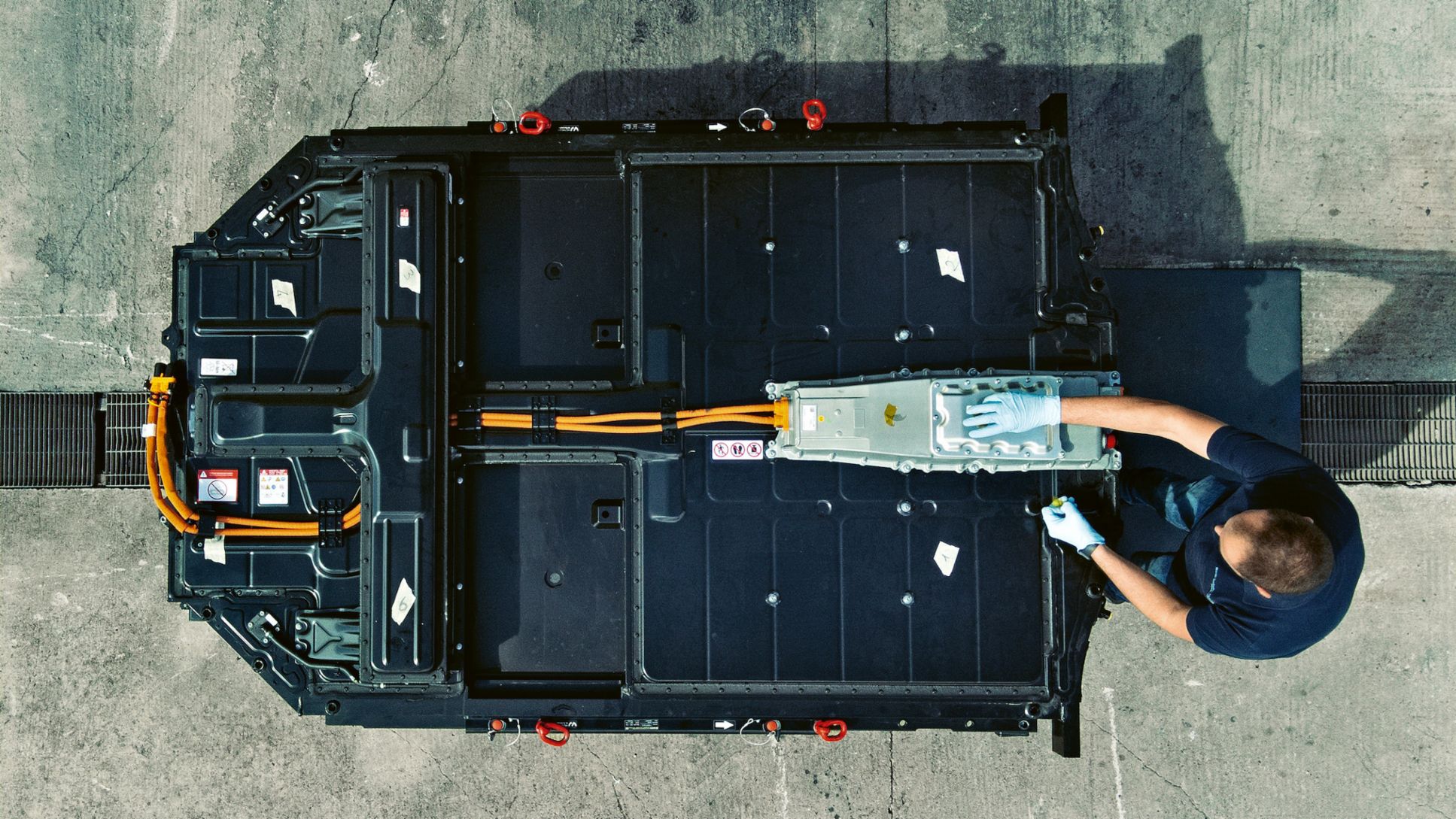
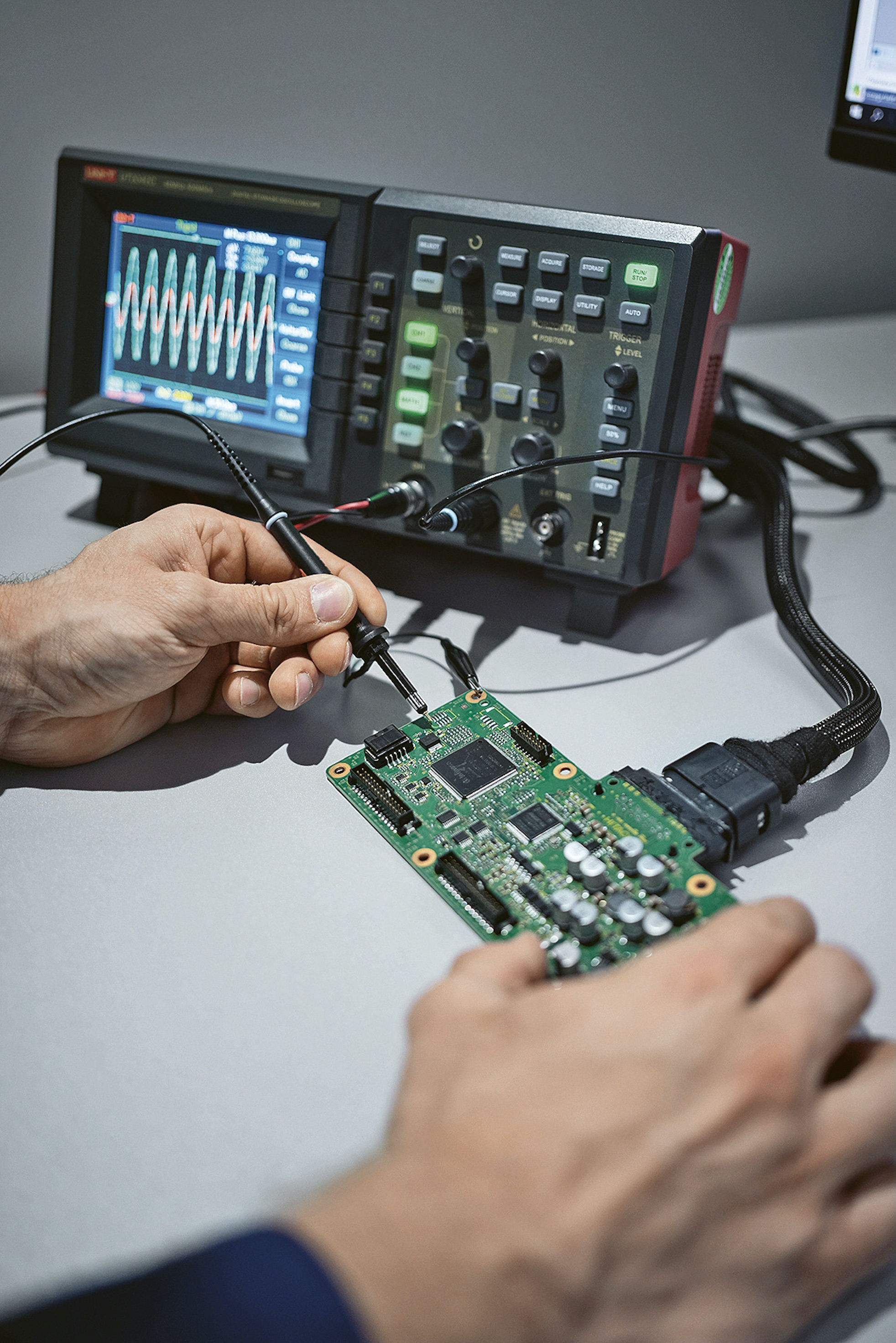
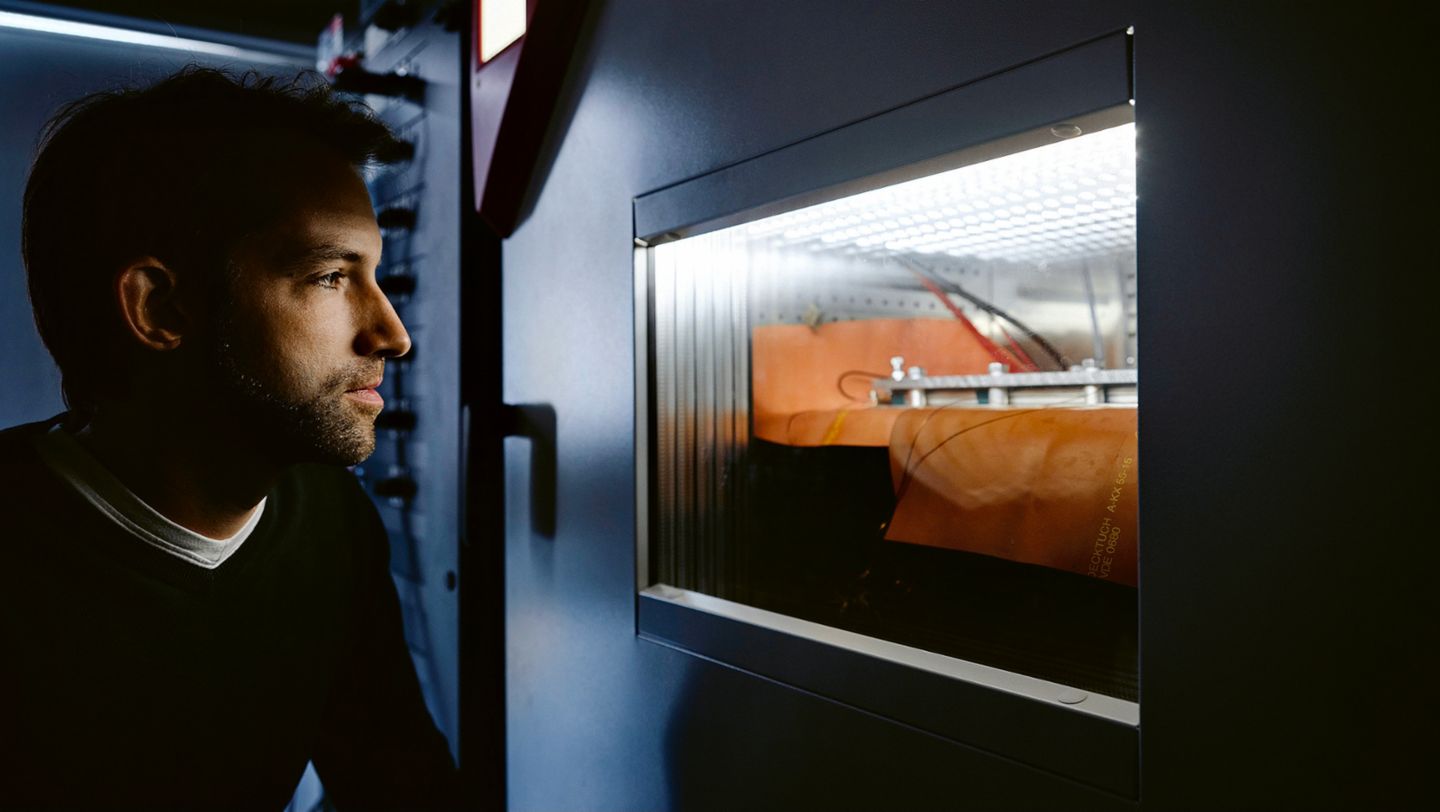
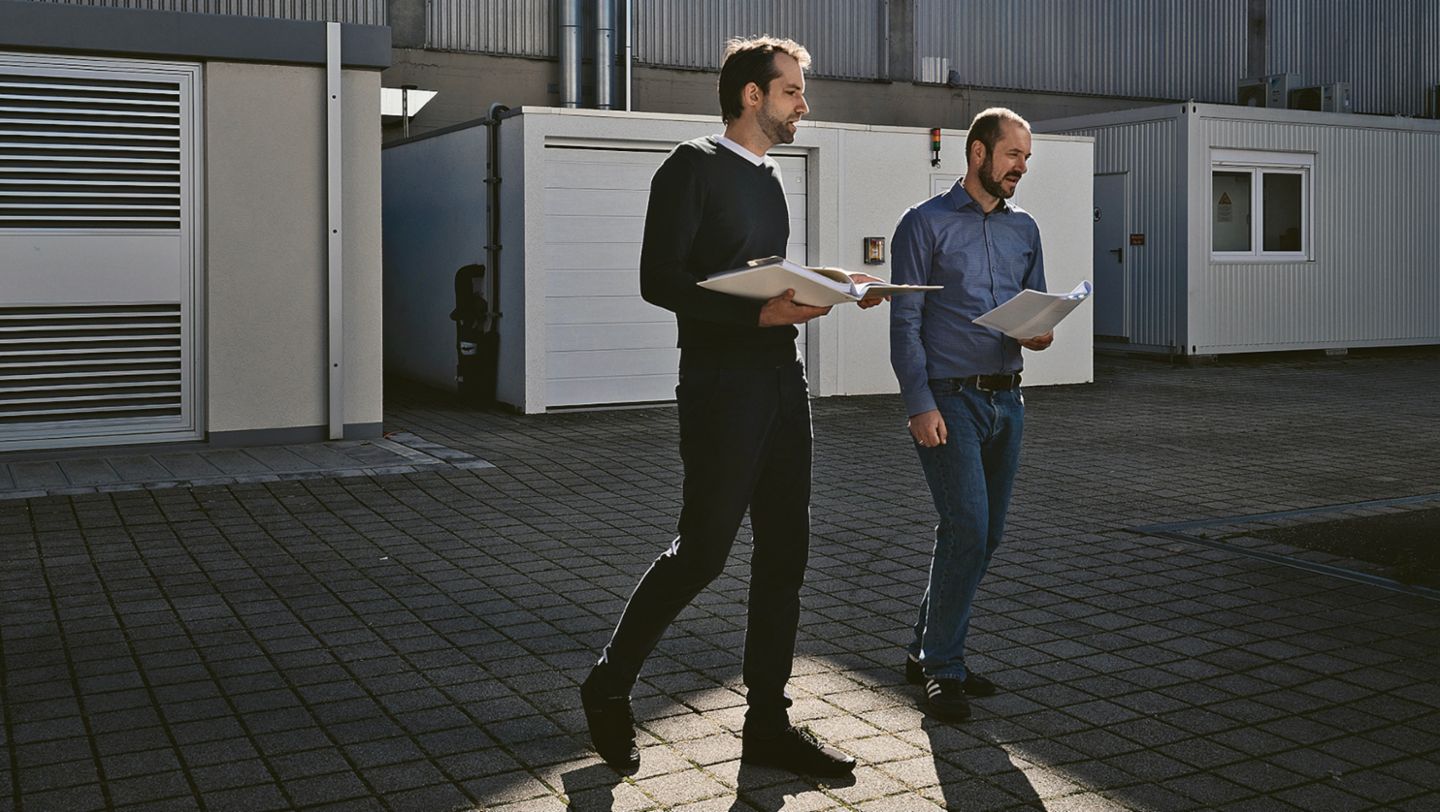
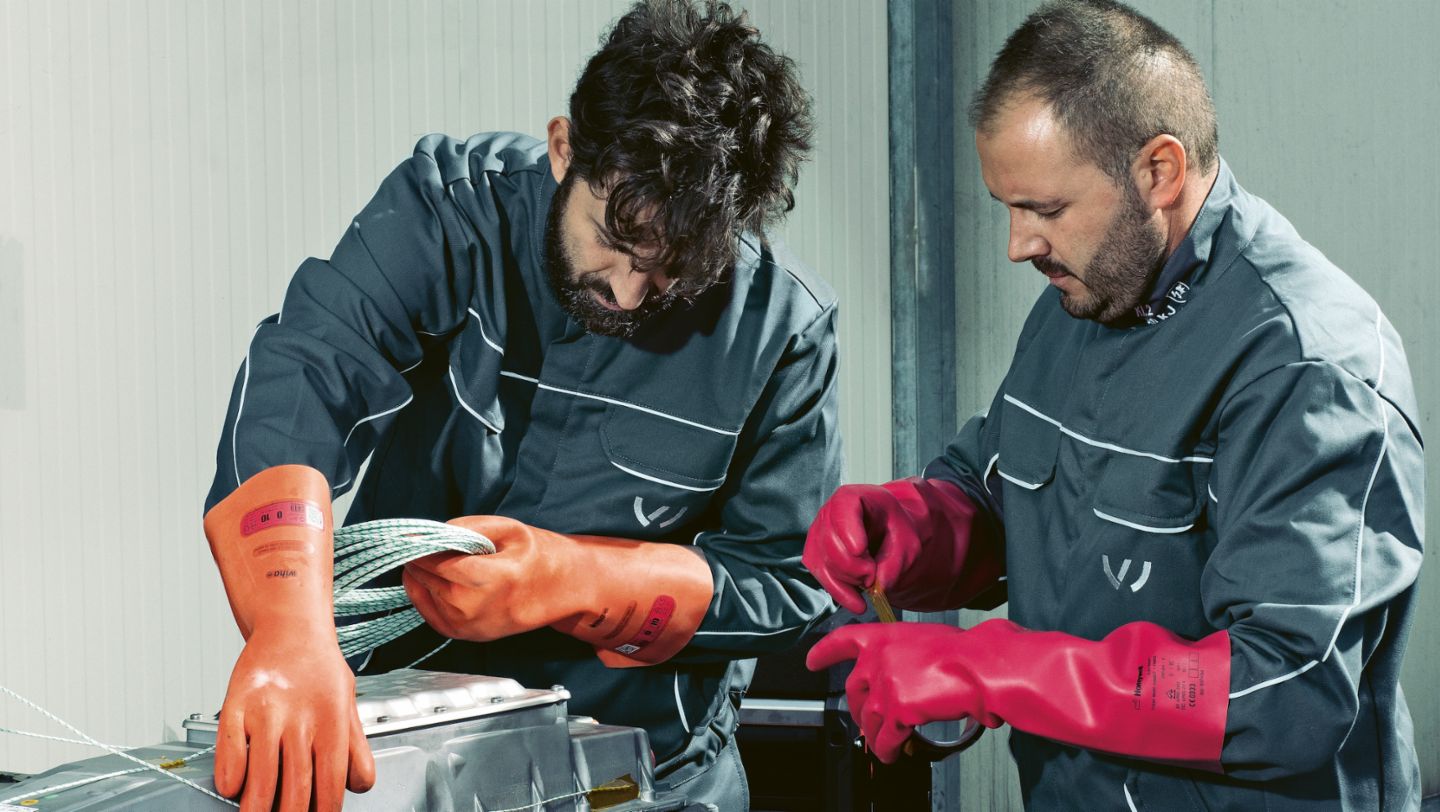
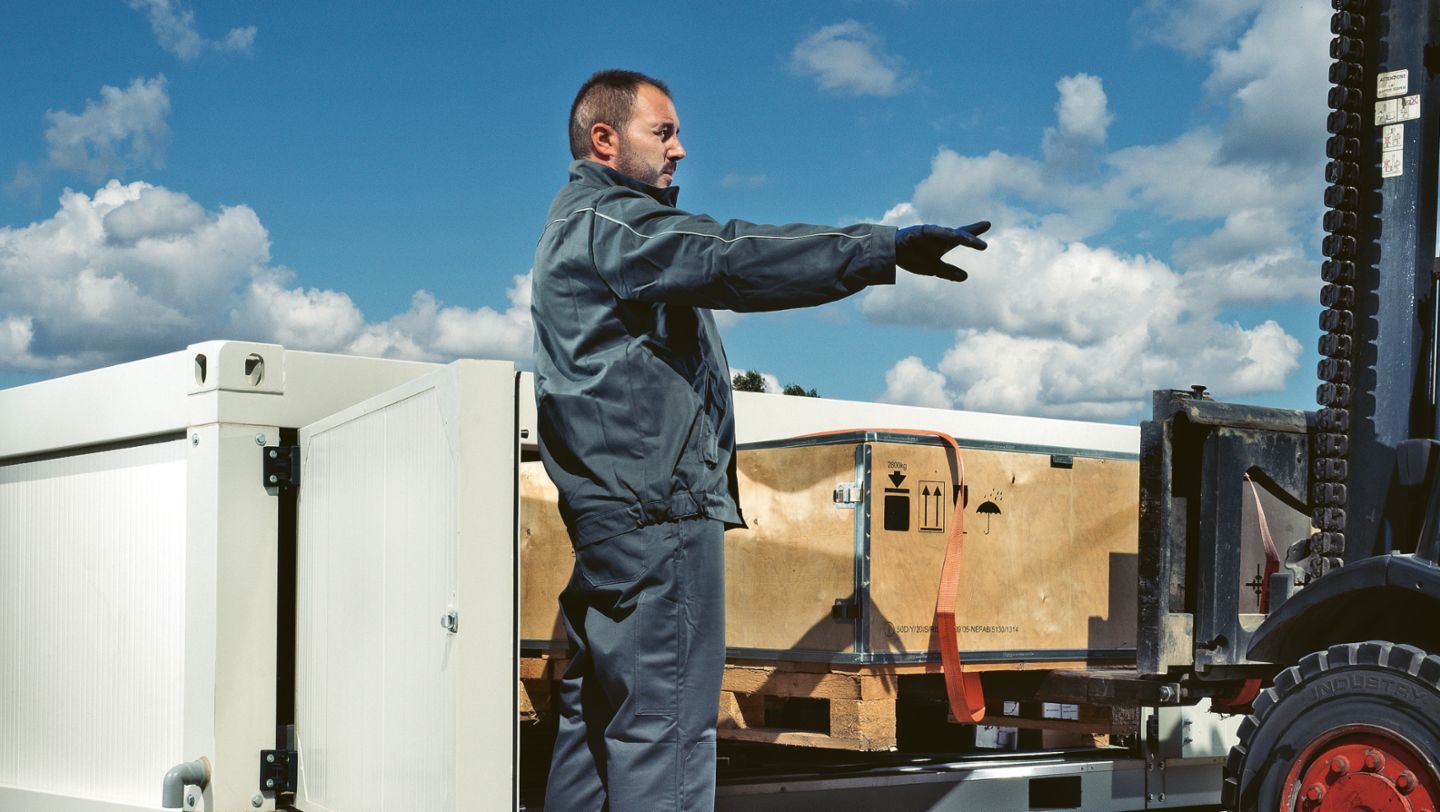
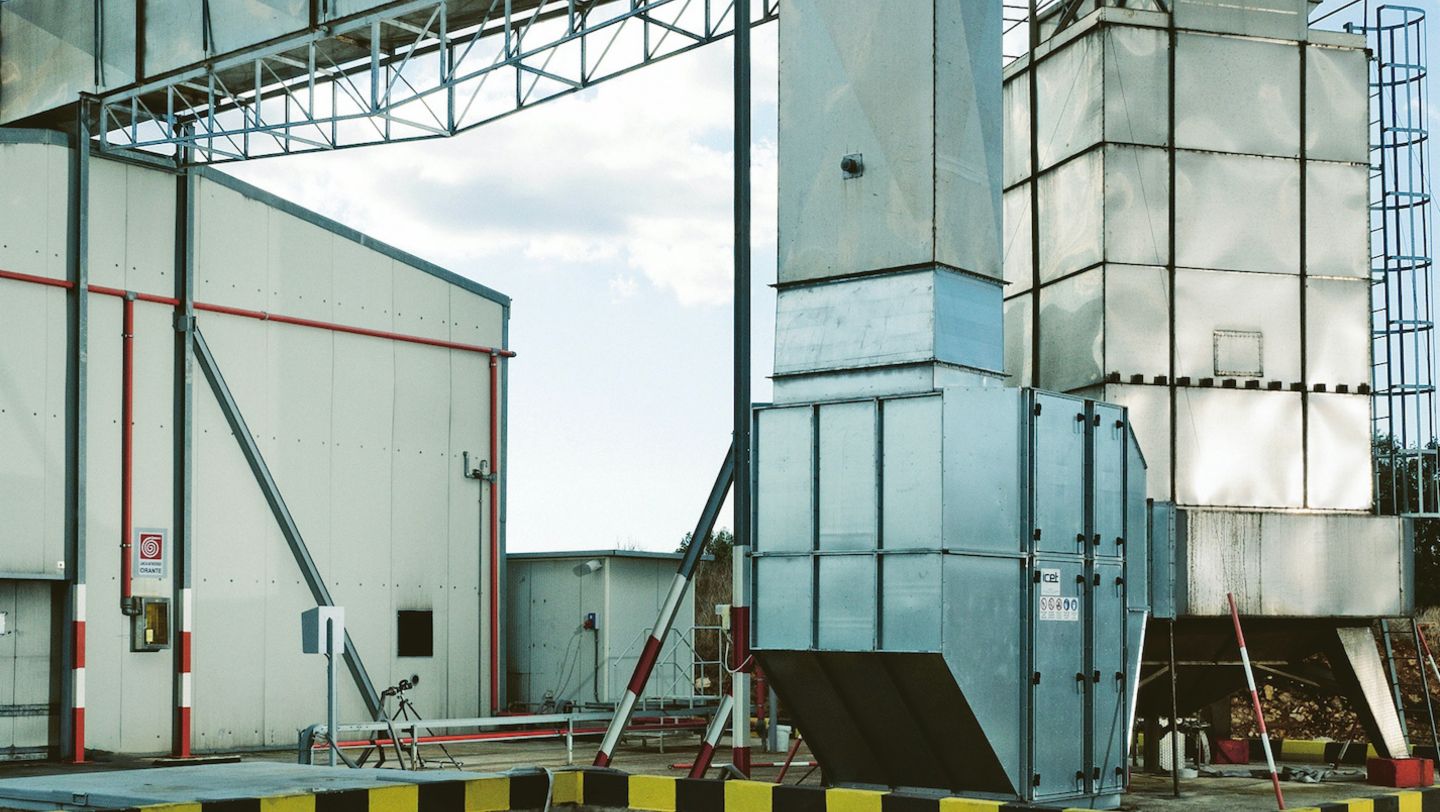

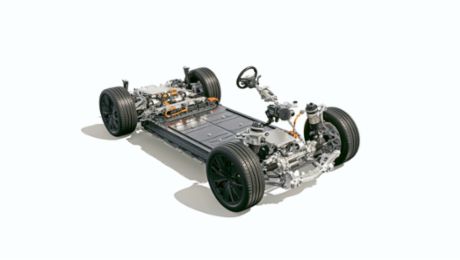.jpg)


